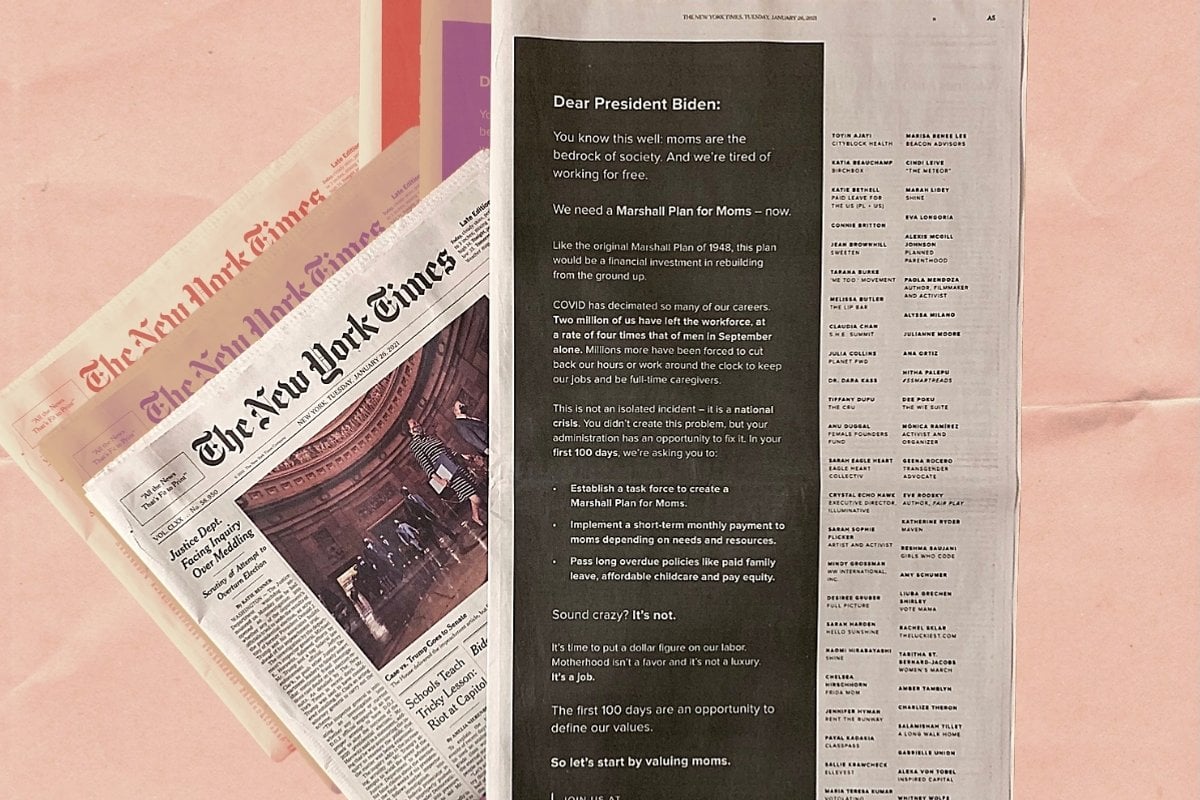
This week, a full-page advertisement appeared in The New York Times. It was in the form of a letter addressed to the newly inaugurated President of the United States, Joe Biden.
"Dr President Biden," it read. "You know this well: Mums are the bedrock of society. And we're tired of working for free."
Watch: Parenting in Australia isn't fair. But it could be...
The ad is part of a campaign called "The Marshall Plan for Mums" led by author, activist and founder of Girls Who Code, Reshma Saujani.
It's backed by 50 high-profile women who co-signed the letter, including the founder of the #metoo movement Tarana Burke and actors Alyssa Milano, Connie Britton, Charlize Theron, Amy Schumer, Julianne Moore and Eva Longoria.
Together, they are calling for the US government to pay mothers for parental labour and to introduce a raft of family-friendly policies that could help rebuild the economy amid the COVID-19 pandemic.
"Motherhood isn’t a favour, and it’s not a luxury. It’s a job," the letter read.
"The first 100 days [of the Biden administration] are an opportunity to define our values. So let’s start by valuing mums."




























































































